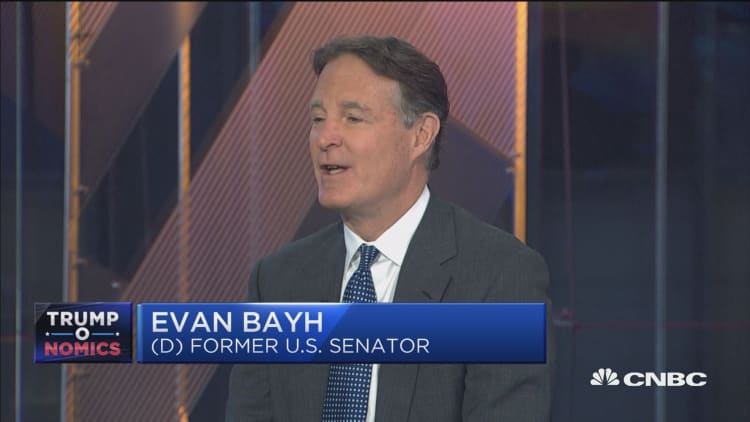The Tax Policy Center, an influential nonpartisan think tank, issued a revised analysis Wednesday of the Republican tax reform plan after discovering an error in its preliminary report earlier this week.
The revised study found that the Tax Cuts and Jobs Act currently being marked up on Capitol Hill would reduce taxes on average for all income groups starting next year, and those cuts would continue over the next decade.
But within the overall tax cuts, the wealthiest 1 percent of taxpayers would benefit far more than the rest of the country. The analysis undermined Republican claims that the bill introduced last week would primarily benefit the middle class over the wealthy.
According to the revised report, in 2018 the top 1 percent of taxpayers — those making more than $730,000 — would receive 21 percent of the total cuts, or an average tax cut of $37,000. Middle-income families, those making between about $48,000 and $86,000, would receive an average tax cut of $800 next year.
Across the board, tax cuts in the bill would increase overall after-tax income by 1.6 percent next year, the report found, although it notes that the greatest benefits would go to those with higher incomes.
Some taxpayers, however, would pay more under the plan, a fact that has dogged Trump administration officials since they began the push for tax reform earlier this year. The revised TPC analysis found that 7 percent of taxpayers would owe more in taxes next year under the GOP plan.
By 2027, the number of taxpayers who would pay more jumps to 25 percent, a quarter of all households. This is due to a combination of factors, including the expiration of a proposed $300 family credit and the way certain credits are indexed for inflation.
The Republican-backed bill would also accrue even more benefits to the top 1 percent of taxpayers in 2027 than it would in 2018, the report found. That group would reap as much as 50 percent of the total tax benefits, or an average increase in after-tax income of 2.2 percent.
President Donald Trump is traveling in Asia this week, but many of his chief economic policy advisors remained in Washington to help hammer out the details of the tax reform bill.
The Tax Cuts and Jobs Act suffered a setback on Wednesday, when the Congressional Budget Office estimated that amendments made to the bill in recent days — aimed at winning the support of key voting blocs — would raise the total cost of the legislation by hundreds of billions of dollars and set it on a collision course with the Senate's version of the bill, which is currently being negotiated.
WATCH: 90% chance House signs tax bill but Senate likely to slow things down



